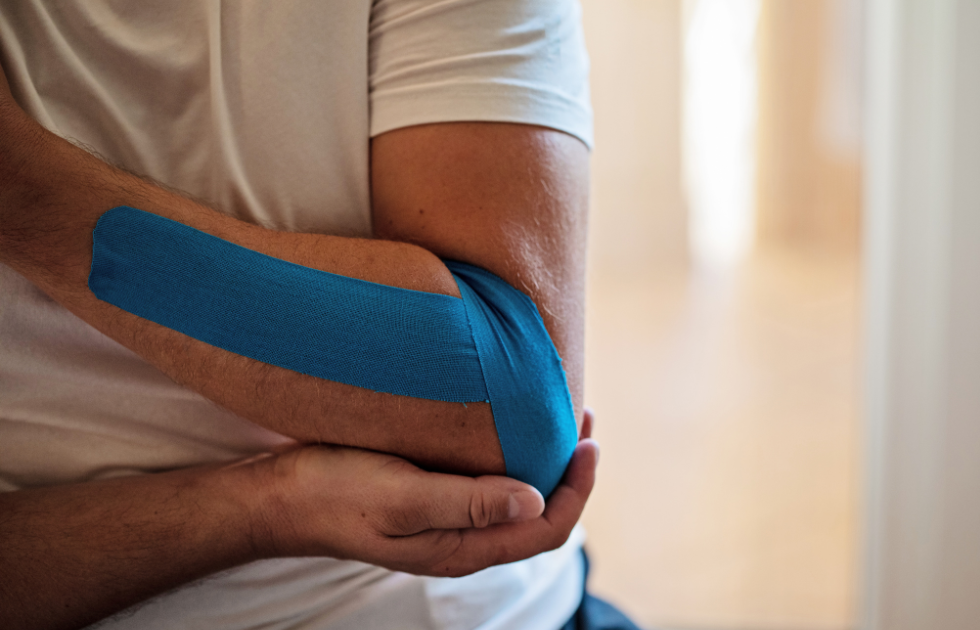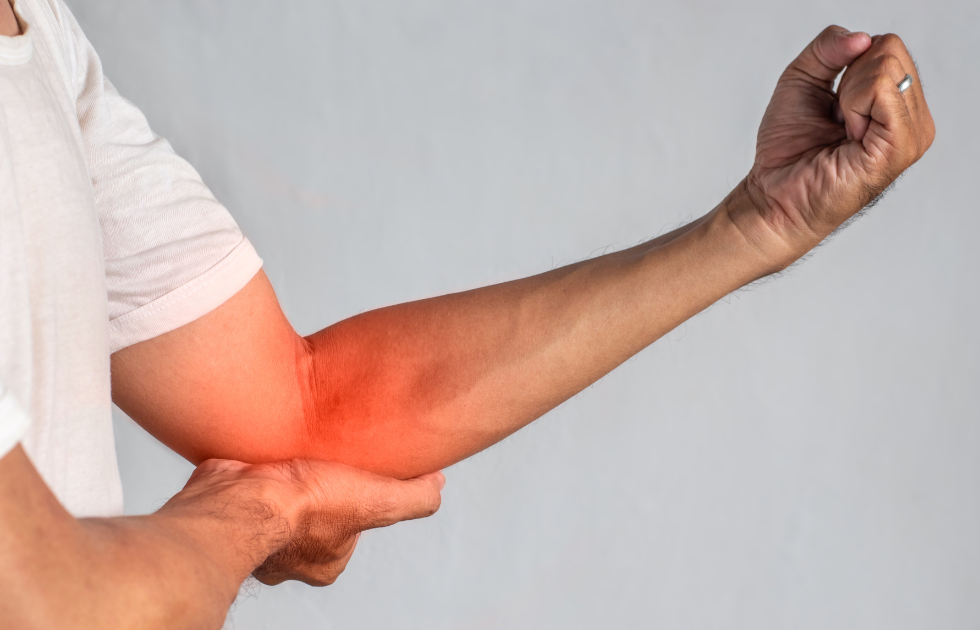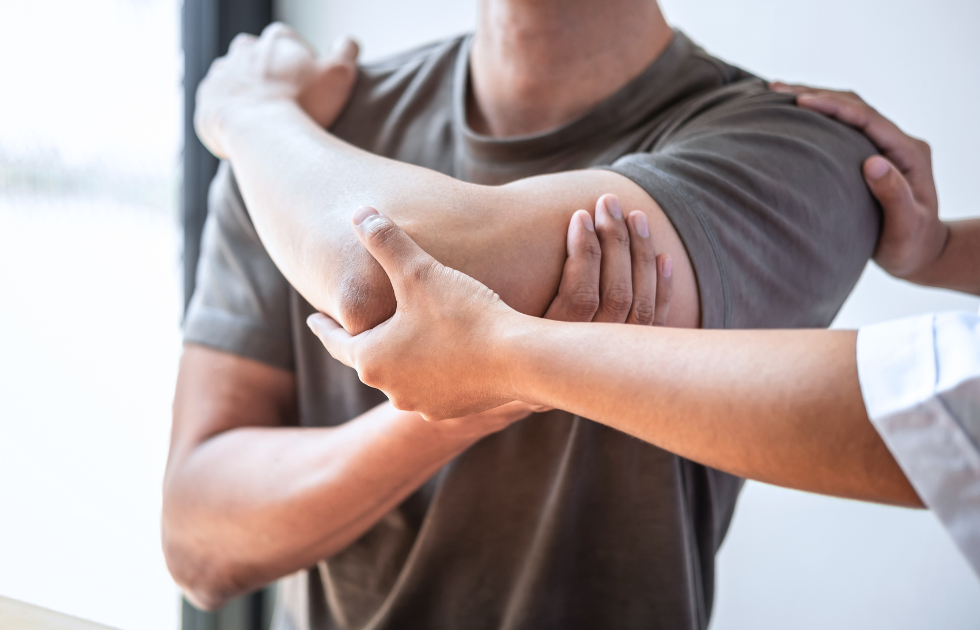Ever felt a sharp pain on the inside or outside of your elbow after gardening, lifting, or even typing? You might be dealing with a common overuse injury-–either golfer’s elbow or tennis elbow. Despite their sporty names, you don’t need to be an athlete to experience them.
These conditions affect thousands of Australians each year and can significantly impact daily activities. Understanding the differences of golfer’s elbow vs tennis elbow is key to effective treatment and long-term relief.
Golfer’s elbow vs tennis elbow
Both conditions are types of tendinopathy, which refers to irritation or damage to the tendons around the elbow. The main difference lies in where the pain occurs and which tendons are involved:
- Tennis elbow (lateral epicondylalgia) affects the outside of the elbow.
- Golfer’s elbow (medial epicondylalgia) affects the inside of the elbow.
Despite their names, these injuries aren’t confined to tennis players or golfers. In fact, fewer than 10% of those diagnosed with tennis elbow actually play tennis.

What are the most common causes of these elbow injuries?
Repetitive strain
Both conditions are usually caused by overuse of the forearm muscles. Repetitive gripping, lifting, or twisting can place excessive strain on the tendons, leading to small tears, inflammation, and reduced tendon function.
Common triggers
Tennis elbow:
- Repetitive wrist extension, pronation and supination
- Common in activities like using tools (e.g., screwdrivers), playing racquet sports, or prolonged typing
Golfer’s elbow:
- Repetitive wrist flexion and pronation
- Often caused by lifting weights, swinging a golf club, or throwing
Risk factors
- Aged between 35–55 years
- Jobs involving manual labour or repetitive upper limb tasks
- Poor posture or technique in sport or work
- Weakness in the shoulder, forearm, or wrist muscles

Symptoms to watch out for
Tennis elbow symptoms
- Pain or burning on the outside of the elbow
- Weakened grip strength
- Pain increases with lifting, shaking hands, or opening jars
Golfer’s elbow symptoms
- Pain or tenderness on the inside of the elbow
- Stiffness or reduced movement in the elbow
- Pain worsens with gripping or wrist flexion
These symptoms often start gradually and can worsen if left untreated.
Diagnosing the condition
A physiotherapist can typically diagnose golfer’s or tennis elbow through:
- Physical examination: Assessing for tenderness and pain with specific movements.
- Functional tests: Using clinical tests to isolate the affected tendon.
- Imaging: Ultrasound or MRI may be used in persistent or complex cases to confirm the diagnosis or rule out other conditions, such as nerve entrapment or arthritis.
Treatment options
1. Rest and activity modification
Reducing or modifying the aggravating activity is often the first step. This doesn’t mean complete rest — gentle, guided movement is encouraged to support healing and maintain function.
2. Physiotherapy
Our physiotherapists provide individualised rehabilitation programmes designed to:
- Strengthen the forearm, shoulder, and core muscles
- Gradually load the tendon to restore its ability to handle stress
- Apply manual therapy to improve mobility and reduce tension
- Offer dry needling or myofascial release, where appropriate
- Use bracing or taping to offload the affected tendon during activities
3. Sports medicine interventions
If symptoms persist after several months of conservative treatment, a sports medicine physician may explore other treatment options. These are tailored to each client and discussed thoroughly before proceeding.
4. Diet and recovery
A dietitian may recommend anti-inflammatory foods and adequate protein intake to support tendon repair and overall recovery.
Golfer’s elbow vs. tennis elbow: which one do you have?
- If your pain is on the inside of the elbow and worsens with gripping or wrist flexion, it’s likely golfer’s elbow.
- If your pain is on the outside and worsens with lifting or wrist extension, tennis elbow is more likely.
Still, it’s important to seek a professional assessment. Other conditions, such as nerve compression or arthritis, can mimic the symptoms and require different treatment.

Prevention tips
- Warm up before any sport or physical activity
- Use correct technique in exercise and work
- Strengthen forearm, shoulder, and core muscles
- Take breaks from repetitive or forceful activities
- Use ergonomic equipment or workstations to reduce strain
When to seek help
If your elbow pain has lasted more than a few weeks and you’re unsure whether it’s golfer’s elbow vs tennis elbow, it’s time to seek professional care. Early treatment can prevent long-term tendon damage and speed up recovery.
At Lifecare, our team of physiotherapists, sports doctors, and dietitians collaborate to deliver comprehensive, tailored treatment plans — all designed around your goals and lifestyle.
Don’t let elbow pain hold you back
While tennis elbow and golfer’s elbow affect different areas of the arm, both conditions respond well to targeted care. With early diagnosis and the right treatment, most people make a full recovery.
If you’re struggling with elbow pain, find your closest Lifecare clinic today and take the first step towards lasting relief.
Contact your nearest Lifecare clinic today to learn more. Find your closest Lifecare clinic offering women’s health services to book an appointment.
Written by Christian Inglese, Physiotherapist – Lifecare Essendon Physiotherapy, Lifecare Oak Park Physiotherapy
Christian Inglese is a Physiotherapist working at Lifecare out of our Essendon and Oak Park clinics. With a background in sport and exercise science to go along with a master’s degree in Physiotherapy, Christian is able to utilise conventional Physiotherapy and manual therapy techniques along with exercise and activity-based treatment modalities to improve client outcomes and help people to achieve their health and fitness goals.

